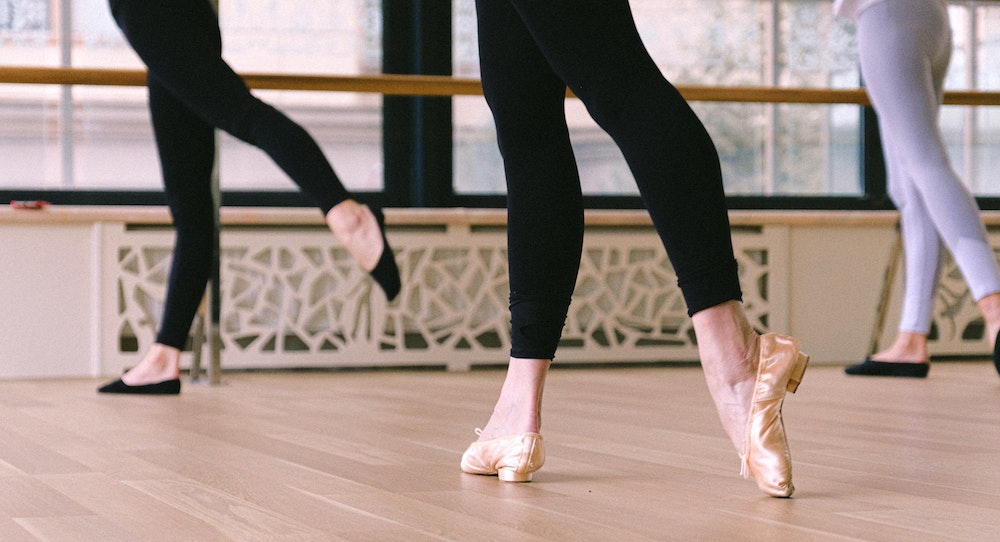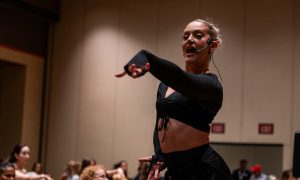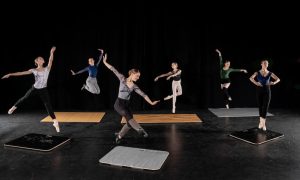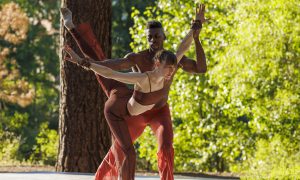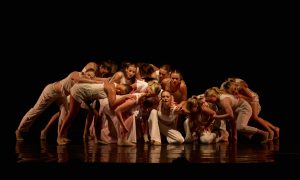As a studio owner, you want to strike a critical balance between a worthwhile investment and high-quality flooring that will also keep your dancers safe. You know that there are many options out there, although some are better than others. Most dance studios find themselves comparing hardwood or vinyl dance flooring. Which one is best for your studio?
Here, we’re going to discuss the pros and cons of both hardwood and vinyl dance surfaces today, so you know which one to select for your studio.
Benefits of hardwood floors
While almost twice as expensive as vinyl flooring, hardwood is durable, long-lasting and is aesthetically pleasing. Hardwood is seen in many ballrooms and event halls for this reason.
The downside? Hardwood floors tend to be expensive to maintain and are usually permanent. You must also factor in the cost of the sprung subfloor that goes beneath. Furthermore, hardwood floors can also be sticky or slippery, depending on humidity and temperature fluctuations. The key is a proper dance floor finish, such as FloorShield II™ from Stagestep.
Benefits of Marley dance floors
There are many varieties of Marley dance surfaces that you might consider for your studio. A denser Marley, such as Stagestep’s Timestep™ will feel more rigid to the touch and not be as pliable as a softer Marley, such as one of the Marley floors in the Bravo Collection™. When compared to hardwood, both hard and soft vinyl is less durable, but they are more slip-resistant and cost less to buy and maintain.
Many styles of dance can be done on Marley flooring, making it a versatile option for dance studios teaching more than one genre. Marley flooring rolls up and is portable, so touring dance companies can bring their preferred floor with them, assuming the floors were installed with tape and not glued down.
There are few, if any, downsides to Marley flooring.
What to consider when selecting dance floors
The flooring you choose for your dance studio, be it a studio at a conservatory, or at home, can change the feel and performance for your dancers. There are a few things to consider when you are trying to decide between hardwood and vinyl dance surfaces, including your budget, the frequency and type of classes, and any additional activities for which the space is being used.
Yet, you should never disregard these factors:
- Durability
- Slip-resistance (coefficient of friction)
- Aesthetic appeal
Let’s look at these in more detail.
Durability
What dance genres are going to be in the studio? What kind of dancer is going to be using the floor? Marley is ideal for just about any genre where bare feet or soft-soled shoes are used. Ballet, pointe, modern and contemporary classes can be conducted on the same Marley floor for years. Vinyl flooring also requires very little maintenance, and it is far more portable than wood flooring.
Tap, ballroom and Latin dancing, on the other hand, will tear up a soft vinyl floor, leaving divots and cuts. In this case, hardwood floors are a great option that will resist the strikes of tap shoes while creating better sound. A harder, denser Marley, such as Timestep™ can handle percussive dance, such as tap, clogging, flamenco and ballroom.
Hardwood floors require more maintenance, including sanding and reapplication of finish. Plus, once you have a hardwood floor, you can’t relocate it. This could be a poor option when leasing a studio or when you need temporary flooring unless you are considering an option like Stagestep’s Encore™, a transportable wood flooring system, with an integrated floating wood subfloor.
Slip-resistance
One of the top concerns among dancers and their teachers is slipping and getting hurt. If your studio is predominantly ballet, modern and contemporary, it is best to go with vinyl. Marley floors have a higher coefficient of friction, giving them extra grip. When dancing on Marley, dancers have a reduced chance of slipping, falling and getting injured.
There are also instances when you want a lower coefficient of friction, such as when teaching tap or hip hop. Since the dancers are wearing footwear, having too much slip resistance could hinder their movements. Hardwood floors and a harder vinyl floor such as Timestep™ are better options.
Stagestep has developed maintenance products, such as Slip NoMor™, ProClean NS™ and FloorShield II™ that make both wood and vinyl flooring safer for all kinds of movement.
Aesthetic appeal
There is no denying that hardwood floors look elegant in a dance studio or multidisciplinary space. If you like the look of wood and have the available budget, there is good reason to consider it.
Marley might not have the same aesthetic appeal and warmth as a natural wooden floor, but it does look professional. Another consideration is the Woodstep Flooring Collection™. These Marley floors have the look of wood and the wear characteristics of a hard Marley. Touring dance companies, dance conservatories and universities, and many other facilities outside of dance use Marley in a variety of applications. If you offer a space for dancing, expect people to come in looking for Marley.
Hardwood or Marley: Which one for you?
When you are opening your studio, you need to consider the costs related to purchase and maintenance along with which styles of dance are best served. You may opt for a temporary solution first before deciding, especially since your dance studio might grow and expand in the future. Don’t forget to consider the three important aspects when choosing your flooring system: durability, slip resistance and aesthetic appeal.
Whether you have decided on hardwood or vinyl for your dance studio, Stagestep offers plenty of possibilities. Its wood and vinyl flooring options support a variety of circumstances, including touring dance companies, at-home practice, professional training and performance.
Visit the Stagestep website to learn more about the company’s flooring, request samples and receive a no-obligation quote.
By Randy Swartz of Stagestep.


